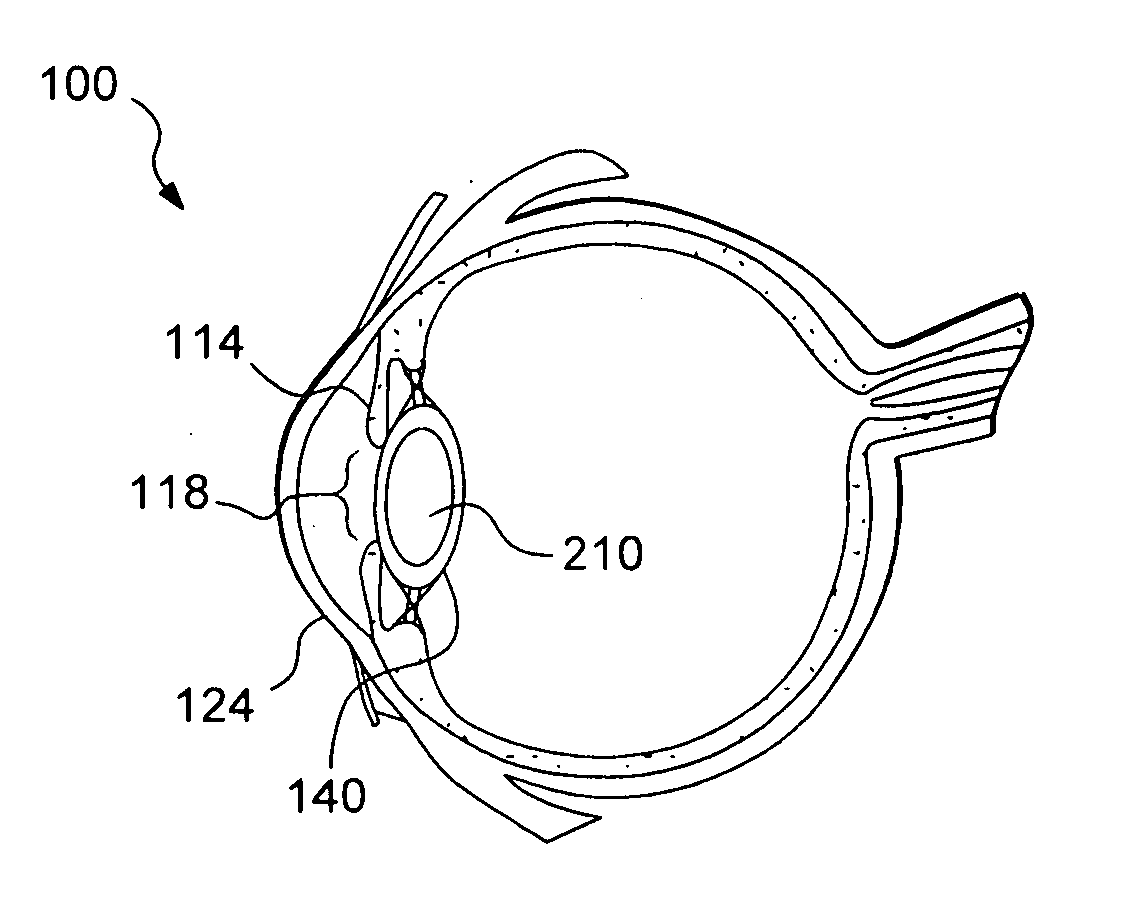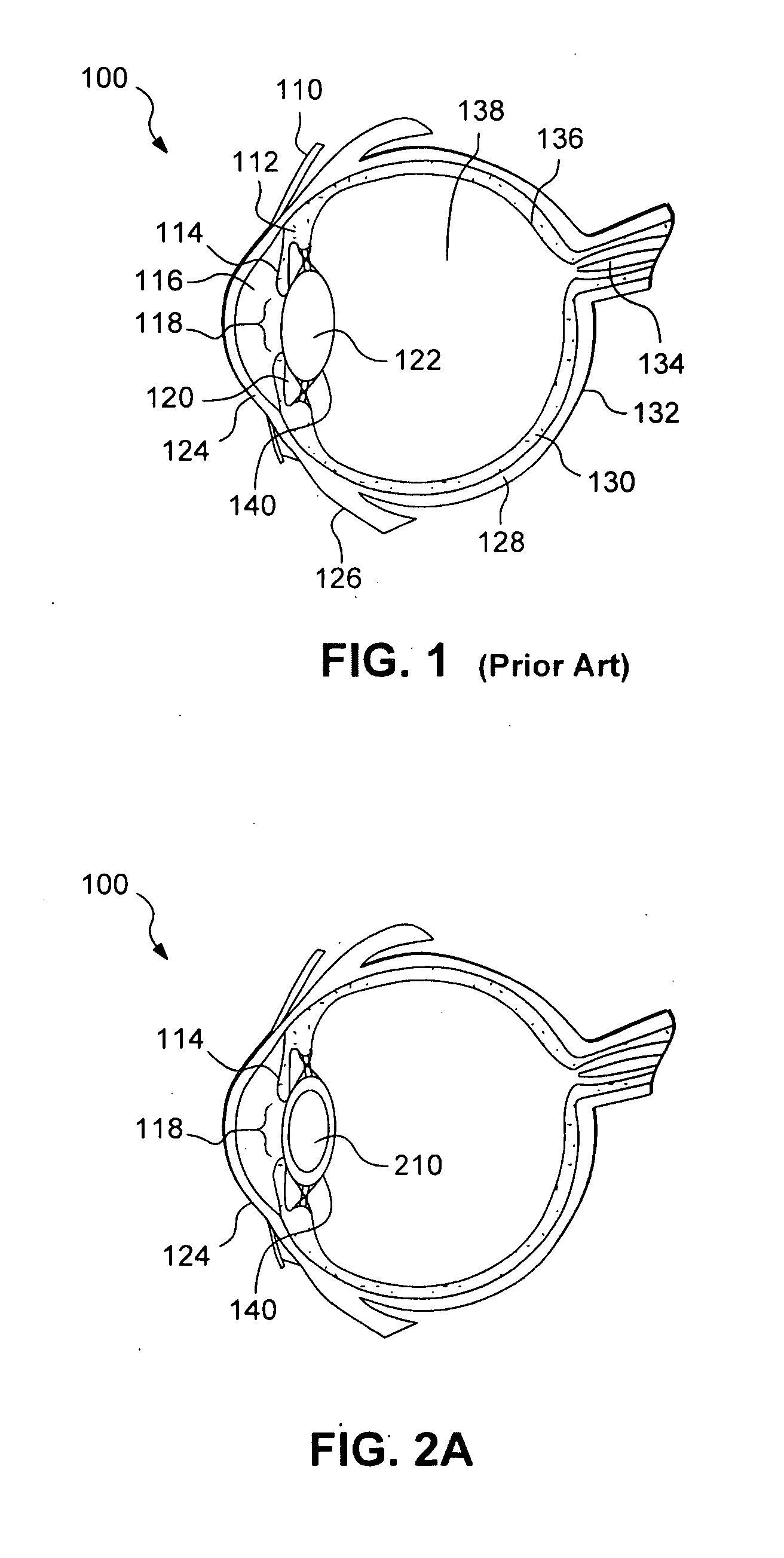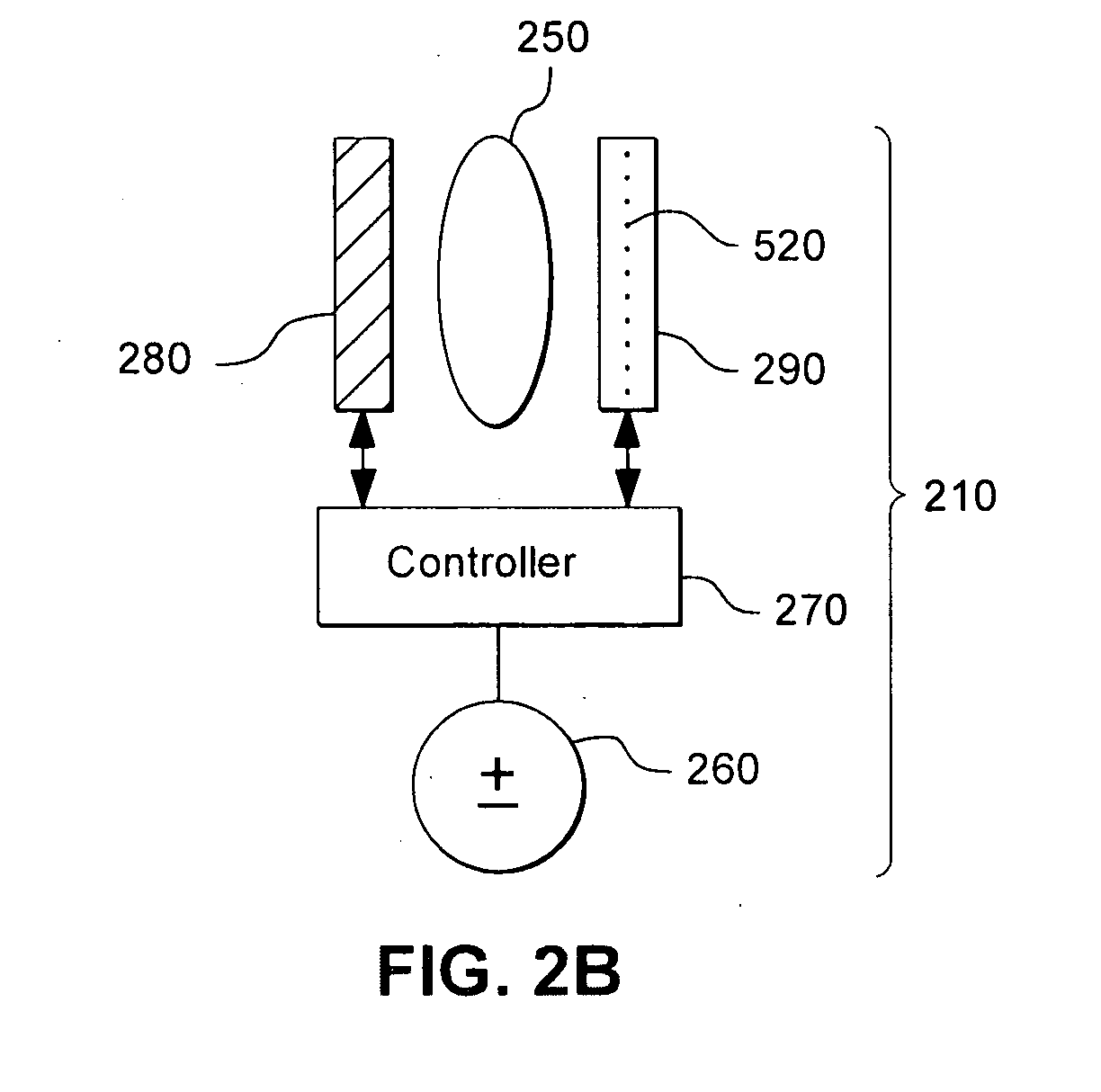Multi-focal intraocular lens system and methods
a multi-focal, intraocular lens technology, applied in the field of multi-focal intraocular lens, can solve the problems of affecting the performance of accomodative iols, and affecting the accuracy of ambient brightness levels
- Summary
- Abstract
- Description
- Claims
- Application Information
AI Technical Summary
Benefits of technology
Problems solved by technology
Method used
Image
Examples
Embodiment Construction
[0039]FIG. 1 shows the anatomical structure of the eye 100 with labels, including: conjunctiva 110; ciliary body 112; iris 114; pupil 118; anterior chamber 116 (containing aqueous humour); crystalline lens 122; cornea 124; extraocular muscle 126; scelera 128; choroid 130; macula 132; optic nerve 134; retina 136; vitreous humor 138; and capsular bag 140. The crystalline lens 122 is encapsulated by a capsular bag 140. During a typical lens replacement surgery, the natural lens 122 is removed from the capsular bag 140, and the new IOL is implanted inside the capsular bag 140 by well known surgical techniques. The IOL can be inserted in a folded condition and then unfolded once inside the capsular bag 140.
[0040]FIG. 2A shows an example of a multi-focal IOL system 210 implanted inside the capsular bag 140. FIG. 2B illustrates a blow up of the IOL system 210 shown in FIG. 2A. Referring to FIG. 2B, in one embodiment, the implanted IOL system 210 includes an electroactive lens 250 having el...
PUM
 Login to View More
Login to View More Abstract
Description
Claims
Application Information
 Login to View More
Login to View More - R&D
- Intellectual Property
- Life Sciences
- Materials
- Tech Scout
- Unparalleled Data Quality
- Higher Quality Content
- 60% Fewer Hallucinations
Browse by: Latest US Patents, China's latest patents, Technical Efficacy Thesaurus, Application Domain, Technology Topic, Popular Technical Reports.
© 2025 PatSnap. All rights reserved.Legal|Privacy policy|Modern Slavery Act Transparency Statement|Sitemap|About US| Contact US: help@patsnap.com



